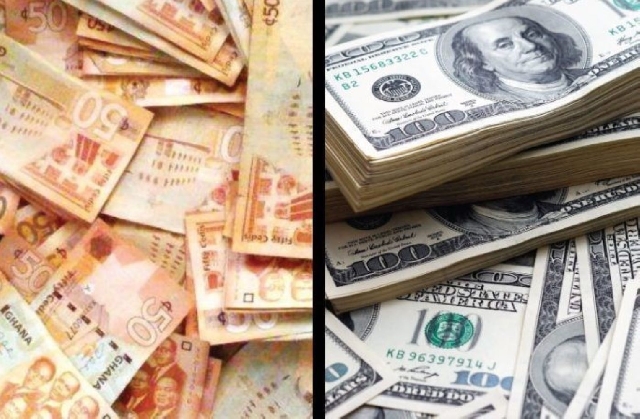The Ghana cedi lost 16.86% in value to the dollar in the first half of 2022 on the interbank market but over 20% on the retail forex market.
However, the rate of depreciation of the cedi slowed down in the last two months, after stern monetary actions from the Bank of Ghana coupled with some fiscal measures to halt the free fall in the first four months of 2022.
But the local currency ended June 2022 as the second most underperforming currency among 15 top currencies tracked by Databank Research.
The Bank of Ghana increased the policy rate by 2.5 percentage points to 17% in March 2022. Again, it enforced measures such as the increase in the Cash Reserve Ratio to 12%, the reset of the Capital Conservation Buffer to the pre-pandemic level of 3% and increased the Capital Adequacy Ratio to 13%.
This move was to encourage investors to invest in cedi-denominated assets, whilst inflation and money supply are effectively controlled.
The government through the Ministry of Finance also instituted fiscal measures to improve and balance the economy. This was to ensure the government was liquid all the time, whilst expenditure is effectively under control.
They include a 10% additional reduction in discretionary spending, a 50% cut in fuel coupon allocation for all political appointees and heads of government institutions, suspension of all foreign travels except pre-approved statutory travels or critical travels, and the reduction of expenditure on all meetings and conferences by 50%.
All these measures were intended to reassure investors that the government was committed to improving the fiscal economy through a reduction in the fiscal deficit and debt.
Currency Analyst, Courage Martey, told Joy Business that it was reassuring that the rate of depreciation of the cedi slowed down in the last two months.
“The cedi suffered one of its most difficult first six months of the year [2022], recording over 16% depreciation on the Bank of Ghana interbank reference rate and over 20% on the retail reference market, but it is noteworthy that over 90% of this depreciation happened during the first three months of the year”.
“So this means the pace of depreciation slowed down during the second quarter of the year. The slowdown was due to BoGs tight monetary policy since March [2022]. It helped to cut the demand-side pressures in addition to the government announcement of expected syndicated loans to beef up the reserves.”
Mr. Martey who is a Senior Currency Analyst at Databank Research, however, said the outlook of the cedi for the rest of the year is not so optimistic.
“Overall it doesn't look like an optimistic outlook for the cedi from this point, we will expect the BOG to have a firm grip on the supply side of the cedi”.
15 TOP AFRICAN CURRENCIES
| CURRENCY | YEAR-TO-DATE DEPRECIATION |
| Malawi kwacha | -20.46% |
| Ghana cedi | -16.86% |
| Egyptian pound | -16.41% |
| Morocco dirham | -8.60% |
| Coted’lvoire CFA | -7.57% |
| Tunisian dinar | -6.63% |
| Uganda shilling | -5.59% |
| Botswana pula | -5.05% |
| Kenya shilling | -3.98% |
| Mauritius rupee | -3.76% |
| South African rand | -2.22% |
| Namibia pound | -2.09% |
| Zambian kwacha | -1.73% |
| Nigerian naira | -0.43% |
| Tanzanian shilling | -0.28% |
Latest Stories
-
‘I did my job’ – Chantelle Boye-Hlorkah bids London City Lionesses farewell after Forest move
30 minutes -
CHAN 2024: CAF charge Zambia, Kenya and Morocco FAs over impromper conduct
1 hour -
GEA CEO urges youth to drive innovation and positive change
1 hour -
Shalimar Abbiusi donates over $9K to empower 150 women in Edo State
1 hour -
Summon Finance Minister, Governor over contradictory Gold for Oil reports- IERPP urges Parliament
2 hours -
Armwrestling: NHIA Boss keen on building long-term support for Ghana’s golden arms
2 hours -
Bawumia commanding overwhelming support ahead of flagbearer race
2 hours -
Abolishing the one year one day rule in Ghana: a necessary step toward modern justice
2 hours -
Abuakwa South MP urges war against galamsey after ministers’ deaths
2 hours -
Today’s Front pages: Wednesday, August 13, 2025
3 hours -
We cannot trade our children’s future for galamsey profits – Senyo Hosi
4 hours -
Nalerigu health workers treat patients in cramped ward after ¢4.5m Covid Centre stalls
4 hours -
‘Let’s contest on policies, not ballots’ – Veep Opoku-Agyemang urges African leaders at Summit
5 hours -
National Guard troops appear in Washington DC as mayor rejects ‘authoritarian push’
5 hours -
Daryl Bosu says helicopter crash must change fight against ‘environmental terrorism’
5 hours

